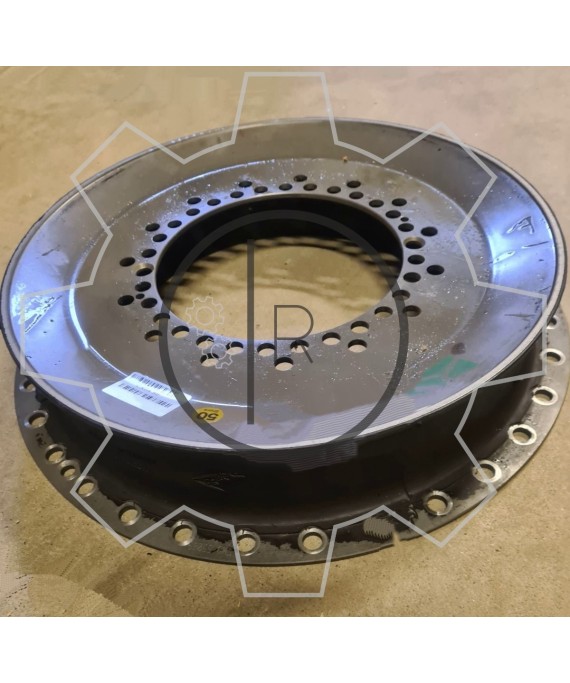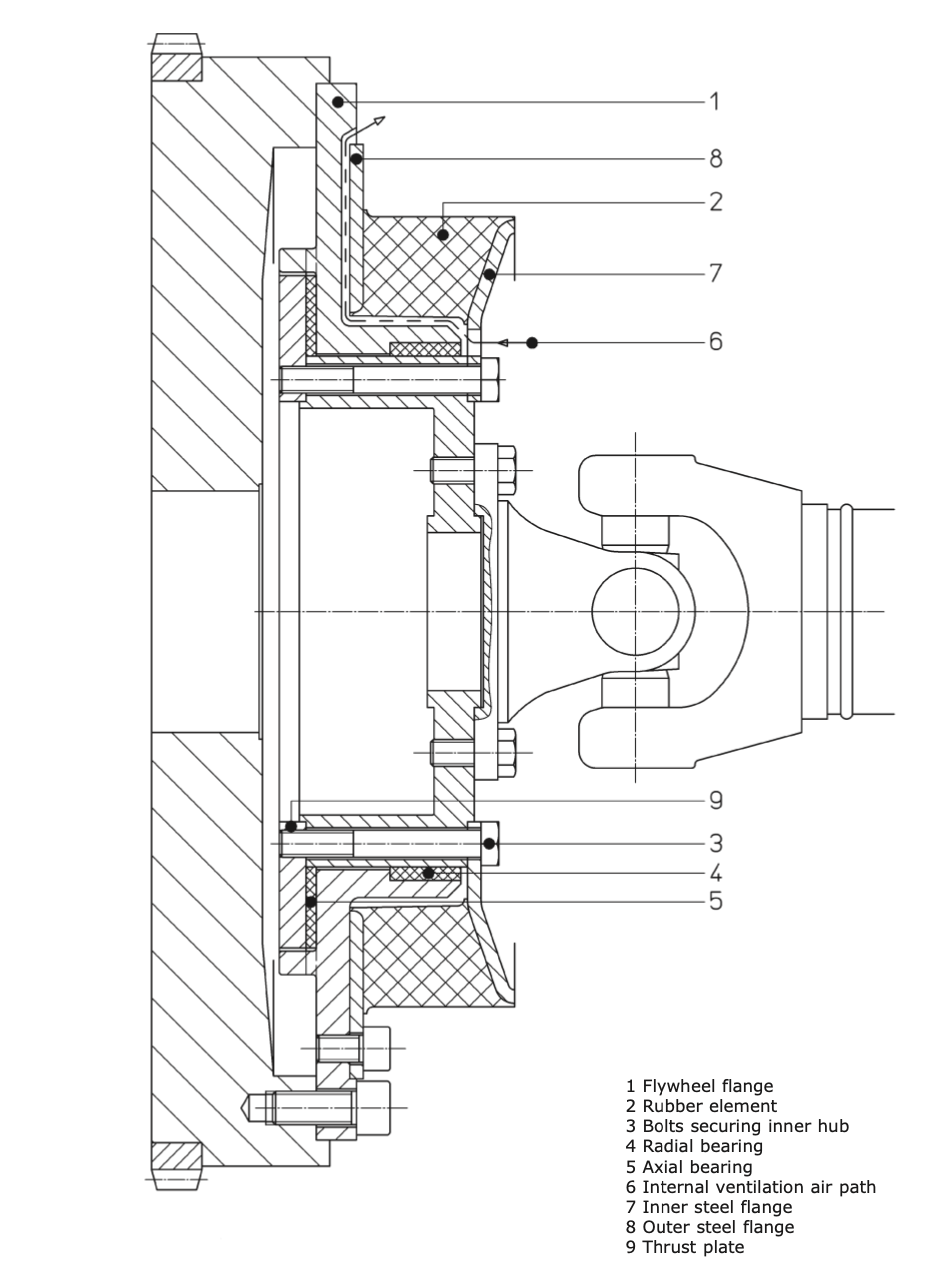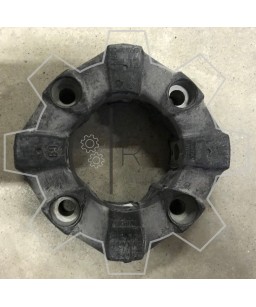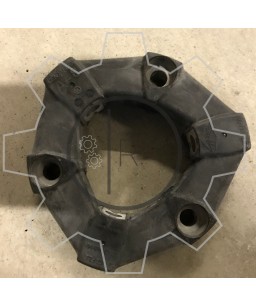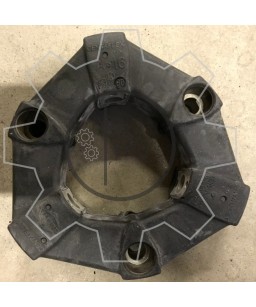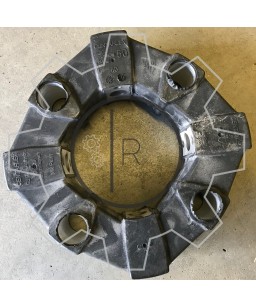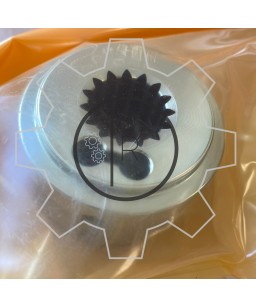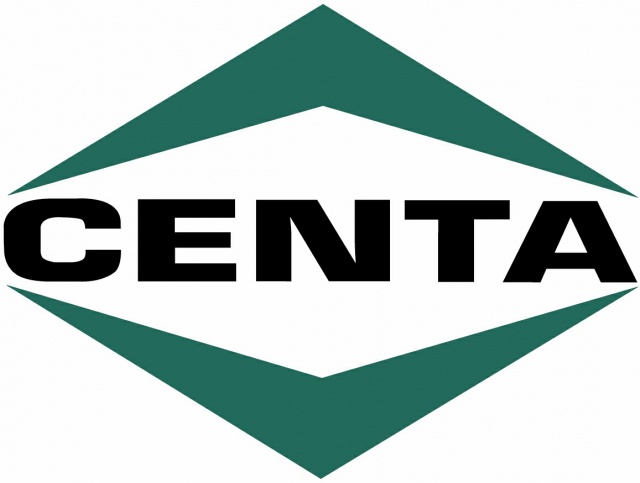
The CENTAX series V intermediate couplings have all these desirable features.
The power flow normally goes from the engine flywheel through a flange to the highly flexible element and from there to the inner hub onto which the universal joint shaft is flange connected.
Driving and driven sides of the coupling are accurately located on a plain bearing so that good concentricity is provided. additionally the rubber element is compressed in an axial direction. This preload is applied when the element is bolted to the inner hub and absorbed by an axial bearing.
Important areas of application:
Construction equipment:
between diesel engine and hydrodynamic transmission, change speed gear and splitter gear, e.g. for dumpers, graders, scrapers, excavators, cranes, etc.
Ship propulsion drives:
between diesel engine and marine gear, waterjet, sterndrive, Z or V drive.
Locomotives:
between engine and transmission, transmission and axle, engine and cooling pump.
Pumping sets.

Sizes:
The CENTAX series V couplings are avialable in 16 standard sizes covering the torque range from 230 to 44.000 nm.
Materials
The flexible element consists of high quality, temperature resistant, natural rubber. The plain bearings are made of well proven high performance material impregnated with oil and suitable for dry running. The flanges which are vulcanized to the elements are precision made from high strength steel.
All flywheel flanges and universal joint shaft connections are produced from spheroidal graphite castings. Thus the couplings are suitable for high rotational speeds. all cast flanges are dynamically balanced to grad g 6.3.
Universal joint shafts are frequently used to transmit the power from a diesel engine to the driven unit where the driven unit cannot be flange mounted to the engine.
Every diesel engine produces torsional vibration and every universal joint shaft has a certain torsional elasticity. When these two components are connected to a driven machine a system is created which in many cases will generate very high vibratory torques somewhere within the equipment. In other words there will be a resonance speed. At this speed the equipment will be subject to very high alternating torques giving rise to noise and damage to working parts leading to premature failure of the system. In resonance the universal joint shaft acts like a spring, which is almost undamped and magnifies the torsional vibration produced by the engine. These oscillating torques can have a value of well over 10 times the output torque of the engine.
This problem can be solved by the introduction of a highly flexible intermediate coupling which will provide two advantages for the drive:
1) The torsional elasticity of the intermediate coupling and universal joint shaft combined is so high that the dangerous resonances are shifted below the operating speed of the engine.
2) The flexible intermediate coupling has a high damping capability so that the vibratory torque is reduced to an acceptable level only a short distance away from the resonance speed. Most importantly, the vibratory torque levels while passing through resonance on engine start up will be within acceptable levels.
Every cardan shaft creates axial and radial reaction forces. The amount depends - among other reasons - on the transmitted torque and the operating angle. Under considerable operating angle these forces can become dangerous to the crankshaft of the diesel engines.
Intermediate coupling types like the CENTAX-V are perfectly suited to tune the system in regard of torsional vibrations, but reaction forces coming from the cardan shaft are transmitted through the coupling to the crankshaft. Therefore on applications where cardan shaft angles are greater than 3 to 4 degrees most diesel engine manufacturers recommend the use of a flange mounted bearing husing. This flanged bearing housing transmits the unwanted reaction forces to the flywheel housing and keeps them away from the crankshaft. The bearing housing is fitted on the flywheel side with either a highly flexible CENTAMAX or a highly flexible CENTAFLEX-R coupling to dampen the torsional vibrations.


